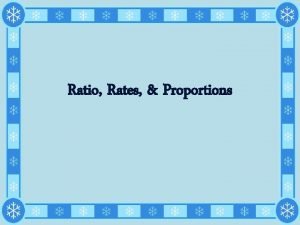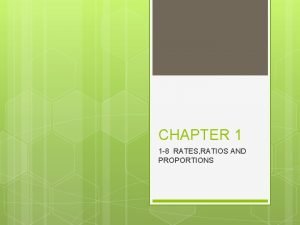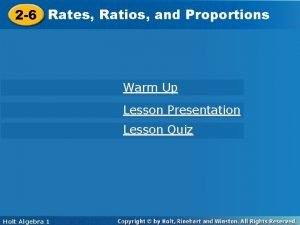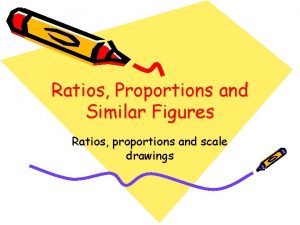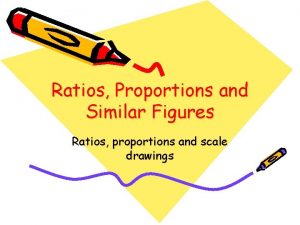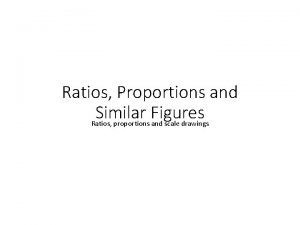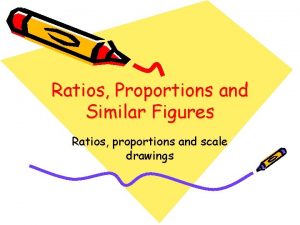Ratios Unit Rates and Proportions UNIT 6 Math







- Slides: 7

Ratios, Unit Rates, and Proportions UNIT 6 Math 7 Plus

So far we have looked at the following ways to use ratios to find unit rates as well as to help us find other equivalent ratios. USING A TABLE TO FIND EQUIVALENT RATIOS • Used to find equivalent ratios using the relationship represented in the table • Can be used to find the unit rate USE MULTIPLYING/DIVIDING by one of the original numbers • Used to find equivalent ratios by mulitplying or dividing both numbers in the original ratio by the same number. GRAPHING IN A COORDINATE PLANE • Best used to make predictions about equivalent ratios • Used to determine if a proportional relationship exists

Today we will look at the “Double Line Graph” method to find unit rate: DOUBLE NUMBER LINE DIAGRAMS • Best used when the two quantities have different units. But can also be used at other times to find equivalent ratios. • Help make visible that there are infinitely many pairs in the same ratio, including those with rational numbers • Same ratios are the same distance from zero

DOUBLE NUMBER LINE DIAGRAMS *Double Line Graphs are best to use when your units are not the same in your ratio. For example: 10 meters in 4 seconds *On a double number line diagram, if the top and bottom numbers are in the same ratio then they are located the same distance from 0 on their respective number lines. *Once we represent 10 meters in 4 seconds below we can use multiplication and division to find other ratios that are equivalent and represent different forms of the same ratio. *Now we use the number line relationship to come up with other ratios. An easy one is to split in half or double. meters 0 5 10 20 0 2 4 8 seconds

DOUBLE NUMBER LINE DIAGRAMS meters 0 2. 5 5 10 15 20 0 1 2 4 6 8 seconds *Let’s look at some other relationships: Let’s take 5 to 2. Knowing this, how could we determine how long it would take to go 15 meters? Note that the distances from the respective zeros on each of the number lines is the same. *To come up with the unit rate, we would look at the bottom unit of seconds. In order to get that to be 1 we would have to divide by two. So if we divide by two on the top and bottom we have our units for the unit rate. *So using the double line graph we have determined that the unit rate is 2. 5 meters per second.

Double number lines to solve problems Driving at a constant speed, you drove 14 miles in 20 minutes. On a “double number line”, show different distances and times that would give you the same speed. Identify equivalent rates below. Distance 0 miles Time 0 minutes 7 miles 10 minutes 14 miles 21 miles 28 miles 20 minutes 30 minutes 40 minutes Adapted from commoncoretools. wordpress. com

Discuss page 16 in Mathscape, RATES, RATIOS, PERCENTS, and PROPORTIONS Blue “Buyer Beware” and then apply double line graphs on worksheet D-59




